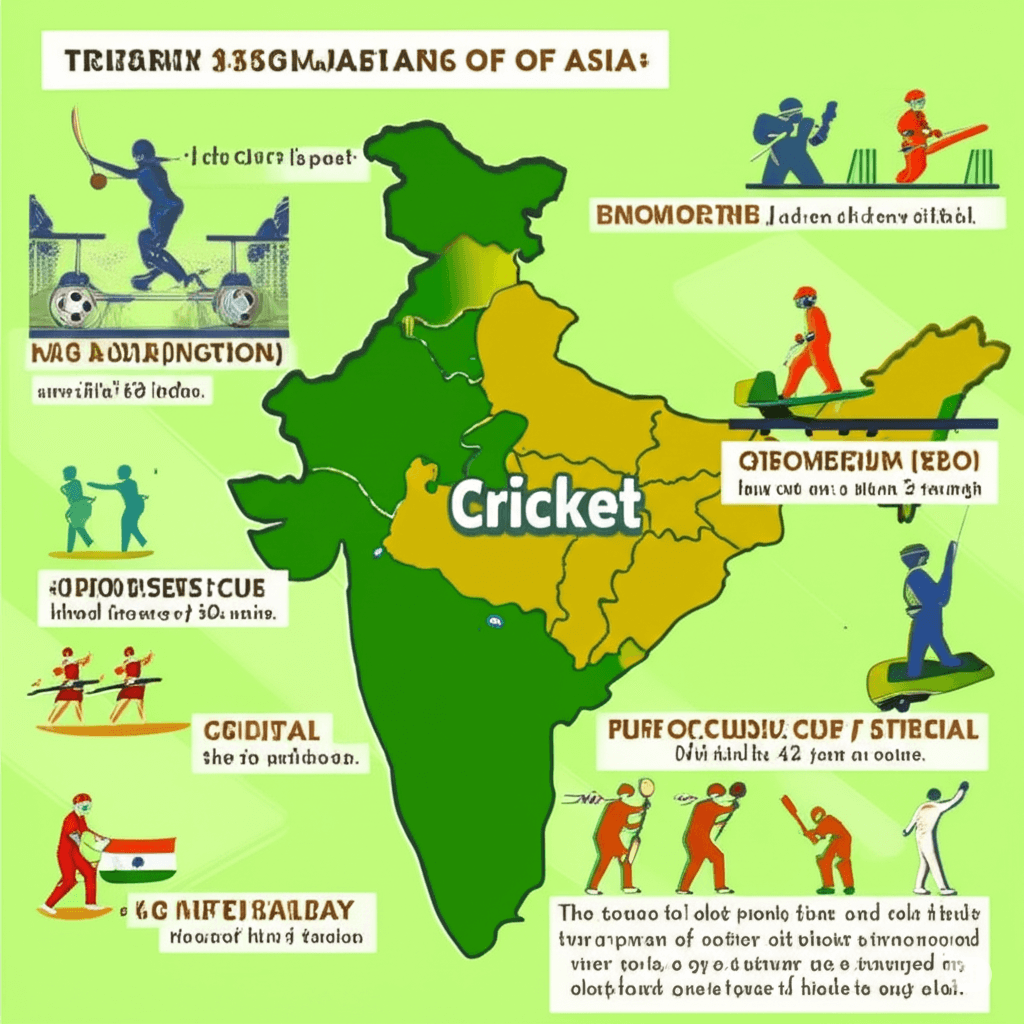Picture this: It’s 2 AM in Mumbai, and the streets are eerily quiet. But inside millions of homes, families huddle around television screens, hearts pounding as Virat Kohli prepares to face the final ball. Will India win? The entire subcontinent holds its breath. This isn’t just sport — it’s religion, politics, and pure emotion rolled into 22 yards of pitch. Cricket in Asia has transcended its colonial origins to become something the British never imagined: a cultural phenomenon that unites and divides nations, creates overnight millionaires, and turns ordinary players into demigods. From the bustling streets of Karachi to the remote villages of Afghanistan, cricket isn’t just played — it’s lived, breathed, and worshipped.
From colonial legacy to cultural obsession — how cricket conquered the Asian soul
Cricket arrived in Asia as an instrument of imperial control. The British Empire used the “gentleman’s game” to teach colonial subjects about hierarchy, patience, and proper conduct. But here’s the beautiful irony: the colonized took this English game and made it more passionate, more colorful, and more meaningful than the colonizers ever imagined.
The transformation from imitation to innovation
Initially, Asian cricket was a pale imitation of English county cricket. Matches dragged on for days with polite applause and tea breaks. But Asian players brought something revolutionary: emotion. They celebrated wickets with wild abandon. They argued with umpires. They played with a passion that made English cricket look sterile by comparison. The student had surpassed the teacher.
Why cricket resonated with Asian cultures
Cricket’s complexity appealed to cultures that appreciated nuance and strategy. Unlike football’s 90-minute intensity, cricket offered time for contemplation, discussion, and dramatic shifts in fortune. In cultures where storytelling and mythology run deep, cricket provided endless narratives — individual heroics, team comebacks, and David versus Goliath battles.
The post-independence cricket explosion
After independence, cricket became a tool of national identity. India’s 1971 series victory over the West Indies wasn’t just sporting success — it was proof that the new nation could compete with the world’s best. Pakistan’s 1992 World Cup triumph under Imran Khan created a generation of cricket fanatics. These victories weren’t just wins; they were statements of national pride and capability.
The Indian Premier League revolution — how T20 transformed cricket economics forever
The IPL didn’t just change cricket; it revolutionized global sports business. When the first season launched in 2008, critics dismissed it as “cricket’s circus.” Traditionalists were horrified by cheerleaders, strategic timeouts, and players switching teams for money. But the IPL understood something cricket administrators had missed: entertainment value drives revenue.
The Bollywood effect on cricket presentation
Cheerleaders, music, and sensory overload
The IPL borrowed heavily from American sports entertainment. Cheerleaders performed between overs. Music pumped through stadiums. Pyrotechnics accompanied player entrances. Traditional cricket fans were appalled, but younger audiences were mesmerized. The IPL proved that cricket could be both sport and spectacle.
Celebrity ownership creating emotional investment
When Shah Rukh Khan bought the Kolkata Knight Riders, he brought Bollywood glamour to cricket. Celebrity owners attended matches, celebrated victories, and commiserated defeats alongside fans. This celebrity involvement created emotional connections beyond traditional team loyalties.
Strategic timeouts and TV-friendly innovations
The IPL introduced strategic timeouts — mandatory breaks that allowed teams to regroup while television broadcasters sold advertisements. Critics called it artificial, but it worked. Television revenues soared, player salaries exploded, and cricket became financially sustainable for the first time in many Asian countries.
Pakistan’s passionate cricket culture — where legends are born in street matches
Pakistan cricket operates on pure emotion. No other nation produces such naturally gifted fast bowlers, unpredictable batting talent, and dramatic match-winning performances. But Pakistani cricket is also beautifully chaotic — a reflection of the nation’s complex personality.
Pakistani cricket culture starts in the streets. Children play with tennis balls, makeshift wickets, and boundless enthusiasm. They practice on concrete pitches, dodge traffic, and dream of representing their country. This street cricket background produces players with incredible hand-eye coordination and the ability to improvise under pressure.
The tape-ball cricket phenomenon that shapes champions
- Tennis ball modifications: Adding tape to create swing and bounce variations
- Innovative shot-making: Developing unorthodox techniques to score runs
- Pressure situations: Playing with immediate consequences in street environments
- Natural talent identification: Outstanding players quickly gain local recognition
- Community investment: Neighborhoods supporting promising young cricketers
This grassroots system has produced legends like Wasim Akram, Inzamam-ul-Haq, and Babar Azam. Pakistan’s cricket nurseries aren’t academies — they’re streets, parks, and vacant lots where passion compensates for lack of facilities.
Afghanistan’s remarkable rise — from war-torn nation to cricket powerhouse
Afghanistan’s cricket story reads like a Hollywood screenplay. In a country ravaged by decades of war, cricket provided hope, identity, and international recognition. Afghan refugees learned cricket in Pakistani camps, then returned home to build a cricket infrastructure from nothing.
Building cricket infrastructure amid conflict
- Refugee camp origins: Learning the game in Pakistani refugee settlements
- Returning home: Bringing cricket knowledge back to Afghanistan
- Government support: Official recognition and funding for cricket development
The Afghanistan Cricket Board operates under conditions that would challenge any sports organization. Players train while bombs explode in nearby districts. Matches are postponed due to security threats. Yet Afghan cricket continues to grow because it represents something larger than sport — national pride and international legitimacy.
From Associate status to Test cricket in record time
Afghanistan achieved Test status faster than any nation in cricket history. Their journey from Associate member to full ICC membership took just 15 years — a testament to their dedication, talent, and the global cricket community’s recognition of their potential.
Bangladesh cricket miracle — how the Tigers roared onto the world stage
Bangladesh cricket was a joke for its first decade as a Test nation. They lost consistently, often by embarrassing margins. Players were ridiculed, fans stayed away, and critics questioned their Test status. But Bangladesh persevered, and their transformation into a competitive cricket nation represents one of sport’s greatest comebacks.
Sri Lanka’s golden generation — small island, giant cricket dreams
Sri Lanka’s 1996 World Cup victory remains one of cricket’s greatest upsets. A small island nation with limited resources defeated cricket superpowers through innovative tactics, fearless batting, and collective determination. Sanath Jayasuriya and Romesh Kaluwitharana revolutionized opening batting by attacking from the first ball.
Beyond borders — cricket’s role in Asian diplomacy and national identity
Cricket transcends sport in Asia. India-Pakistan matches stop both nations. Governments use cricket tours as diplomatic tools. Players become ambassadors, bridging political divides through shared sporting passion. When cricket succeeds, nations celebrate. When it fails, governments face criticism. This unique relationship between sport and society makes Asian cricket unlike anywhere else in the world.



